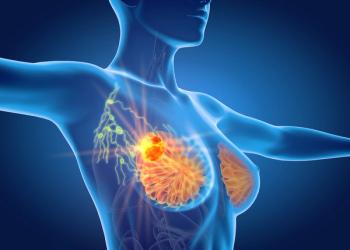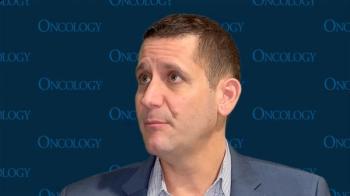
Oncology NEWS International
- Oncology NEWS International Vol 17 No 6
- Volume 17
- Issue 6
Advanced pancreatic ca responds to Abraxane/Gemzar
SAN DIEGO-More than 70% of advanced pancreatic patients derived some clinical benefit when treated with nanoparticle albumin-bound (nab) paclitaxel (Abraxane) and gemcitabine (Gemzar), in a phase I study reported at the 2008 American Association of Cancer Research meeting (abstract 4179).
SAN DIEGO-More than 70% of advanced pancreatic patients derived some clinical benefit when treated with nanoparticle albumin-bound (nab) paclitaxel (Abraxane) and gemcitabine (Gemzar), in a phase I study reported at the 2008 American Association of Cancer Research meeting (abstract 4179).
Daniel D. Von Hoff, MD, physician in chief at the Translational Genomics Research Institute and chief medical officer for the Scottsdale Clinical Research Institute, presented the results in 20 patients who received nab-paclitaxel 100 to 150 mg/m2 and gemcitabine 1,000 mg/m2. Planned enrollment is 42 patients.
“We want to use this regimen to shrink tumors rapidly and render inoperable patients operable,” he said.
Of the 16 patients who had CT scans, 9 (56%) had a response, and 12 (75%) had a response or stable disease lasting at least 4 months. Of the 17 who had CA 19-9 assessment, CA 19-9
levels dropped more than 20% in 82% of patients, and reductions greater than 70% were seen in 64%, Dr. Von Hoff reported.
“The fact that we saw this kind of activity in a phase I trial is impressive,” he commented. “PET and CT scans showed very dramatic decreases in tumor size.”
Rationale for nab-paclitaxel
Dr. Von Hoff’s team began profiling pancreatic tumors 2 years ago, and a consistent finding was SPARC (secreted protein acidic and rich in cysteine), with about 80% SPARC positive.
“SPARC is an attractant for albumin, and we thought maybe it would attract nab-paclitaxel into the tumor,” he said. SPARC-positive patients typically have a worse prognosis, according to the work of other investigators, he noted.
Dr. Von Hoff and his group are currently correlating SPARC expression with clinical outcomes in this study. Preliminary findings are that 6 of 8 SPARC-positive patients had a partial response, as did 1 of 4 SPARC-negative patients.
Side effects were predictable for these agents. Patients who remained on the drugs the longest developed peripheral neuropathy, but it disappeared upon discontinuation. “This is a manageable regimen. We think nab-paclitaxel at 125 mg/m2 is the right dose,” he added.
Articles in this issue
over 17 years ago
Who’s responsible for safety of outsourced drugs?over 17 years ago
New GnRH blocker degarelix quickly suppresses levels of testosteroneover 17 years ago
Evaluating lung cancer response to therapy: Thinking beyond RECISTover 17 years ago
NELSON trial sails on toward final results in 2015over 17 years ago
Novel breast probe reduces repeat surgeriesover 17 years ago
Radioactive microspheres benefit liver met ptsover 17 years ago
INTORACT trial of Torisel/Avastin in RCC is initiatedNewsletter
Stay up to date on recent advances in the multidisciplinary approach to cancer.

















































































